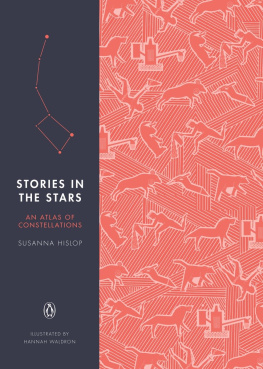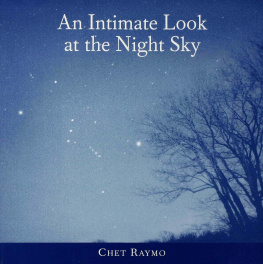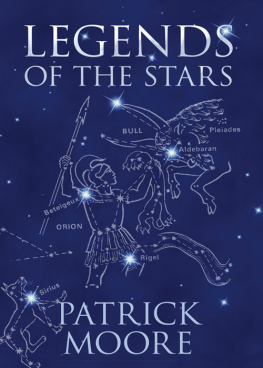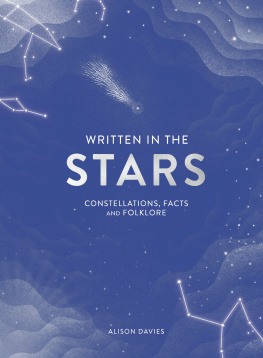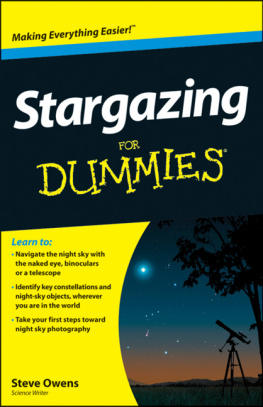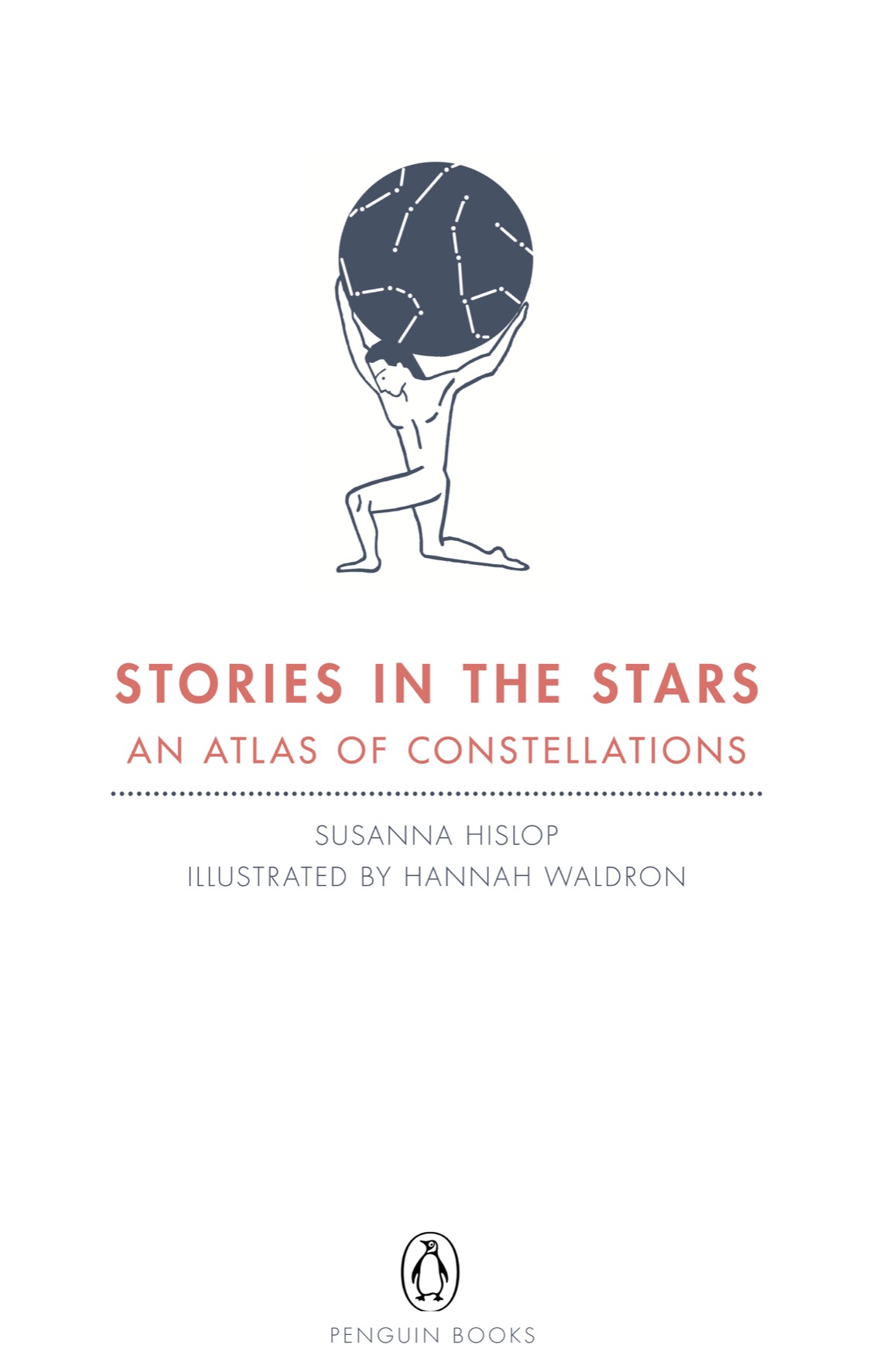PENGUIN BOOKS
An imprint of Penguin Random House LLC
375 Hudson Street
New York, New York 10014
penguin.com
First published in Great Britain by Hutchinson, a division of The Random House Group Limited, 2014
Published in Penguin Books 2015
Published by arrangement with Hutchinson
Text copyright 2014 by Susanna Hislop
Illustrations copyright 2014 by Hannah Waldron
Penguin supports copyright. Copyright fuels creativity, encourages diverse voices, promotes free speech, and creates a vibrant culture. Thank you for buying an authorized edition of this book and for complying with copyright laws by not reproducing, scanning, or distributing any part of it in any form without permission. You are supporting writers and allowing Penguin to continue to publish books for every reader.
Excerpt from The Death of Cygnus from Tales of Ovid, translated by Ted Hughes. Published by Farrar Straus and Giroux 1997.
Excerpt from The Present from Collected Poems by Michael Donaghy. Copyright 2009 by Michael Donaghy. Used by permission of Picador.
While not intended as a field guide, every effort has been taken to ensure accuracy throughout Stories in the Stars.
LIBRARY OF CONGRESS CATALOGING-IN-PUBLIC ATION DATA
Hislop, Susanna.
Stories in the stars : an atlas of constellations / Susanna Hislop ; illustrated by Hannah Waldron.
pages cm
Includes index.
ISBN 978-0-698-19790-9
1. StarsAtlases. 2. StarsMythology. 3. ConstellationsAtlases. 4. ConstellationsMythology. I. Title.
QB65.H57 2015
523.80223dc23
2015018806
STAR MAPS BY WILL WEBB DESIGN
Version_1
TO MY MOTHER, A STORYTELLER, WHO TAUGHT ME HOW TO MAKE STONE SOUP.
S.H.
FOR WILF.
H.W.
CONTENTS
I SPY IN THE NIGHT SKY
I AM STANDING, in the middle of a field, somewhere. I lost all my friends hours ago and this is long before the era of the ubiquitous mobile phone, let alone the possibility of a fifteen-year-old owning one. Mud seeps into my Pumas, making its way through the sagging plastic bags I have duct-taped around them in an improvisation of waterproofing.
I know the words inside out. I belt them out at a volume and intensity that I feel (alongside all the other thousands of people vibrating against one another like particles of some dense gas trapped in a bell jar, sometimes jostling into one another, sometimes walking off for a beer) is in direct proportion to my unrivaled passion for the four stars in front of me.
Although I have sung these words hundreds of timesin my bedroom, at pheromone-heavy house parties, on the unaccomplished edge of the sports pitchI have no idea what they mean. I couldnt spell them or write them down: to me they are just sounds and syllables.
So I have no idea that Alex James is singing about astronomy. Or that the strange words in the Blur song I am wailing far out into the night sky are the names of the moons, planets, and stars above me. Even if I did know the meaning of the lyrics searing themselves into my imagination, I doubt I would look up: it is raining heavily and large globules of water are pounding down on the hood of my Adidas raincoat. But if I were to shift my gaze away from the bright lights on the stage, and up to the June night, I might see high above me, or even Altair and Vega, two of the very stars whose names mean so much to me, even in abstract song, and which, along with Deneb, form the Summer Triangle currently rising in the darkness.
For now, though, I am singing. I am singing unfathomable words that have been passed on to me in song to explain the joy, vastness, and mystery of the universe, and they make perfect sense.
In about 150 AD , an Egyptian astronomer, mathematician, and geographer of Greek descent living in Alexandria, named Klaudios Ptolemaios, created an astronomical treatise unprecedented in size and scope. Not only did it represent the apex of Greco-Roman wisdom on the subject, but it shaped and determined the way that we still gaze up at the stars today. For, at its center, was a catalogue of more than a thousand stars arranged into forty-eight constellations that form the basis of the system we still use to chart the sky. Based largely on the observations of a second-century BC Greek polymath, Hipparchus, it was in some ways a swan song to Hellenic astronomy; by 8 AD , the home of that ancient science was no longer in Alexandria but in Baghdad. Luckily, the Mathmatik Syntaxis, as this monumental treatise was called, was preserved in Arabic manuscripts. Swiftly becoming the astronomers bible, it came to be known by its Arabic title, the Almagest, while the man who made itabout whom very little is actually knownbecame the notorious and often mythologized Ptolemy.
Like historys fascination with Ptolemy himself, our curiosity about the stars is as much about story as it is about science. While any astronomical scheme carving up the firmament represents the scientific achievement of the society that created it, it also represents its culture: the way in which a people plot the stars is a distillation of their collective imagination. As the English artist and writer John Berger has written:
Those who first invented and then named the constellations were storytellers. Tracing an imaginary line between a cluster of stars gave them an image and an identity. The stars threaded on that line were like events threaded on a narrative. Imagining the constellations did not of course change the stars, nor did it change the black emptiness that surrounds them. What it changed was the way people read the night sky.
For all the impressive empiricism of Ptolemys great masterpiece, it is hard to imagine that it would have been preservedand lovedfor thousands of years if it wasnt as brilliant a compilation of myth as of mathematics.
It was not Ptolemy who first told the story of a wild beast growling across the night sky, or a hunter leaping through the heavens with his dogs at his heels, but it was Ptolemy who put the bear of or Heracles, or whether the queen of the gods is Hera or Juno. (Ive opted for an intentionally capricious mix throughout.) Even after the ancients had swallowed up the star-lore of Mesopotamia and spat it out as their own, the Arabs, medieval monks, intrepid voyagers of the sixteenth century, and the telescoped astronomers of the Enlightenment all had a good tinker with the sidereal stories of the past. A nineteenth-century mapmaker called Julius Schiller once tried to Christianize the sky by giving all the constellations biblical names and stories; while a twentieth-century globe maker reconfigured their narrative coordinates to tell the story of Alices Adventures in Wonderland. And all this is only within the Western view of things. The ancient Chinese had an equally complex and entirely different astronomical system, while entire universes of indigenous myths, so often ignored by colonizing forces, have only recently begun to be told outside of the cultures that invented them.

